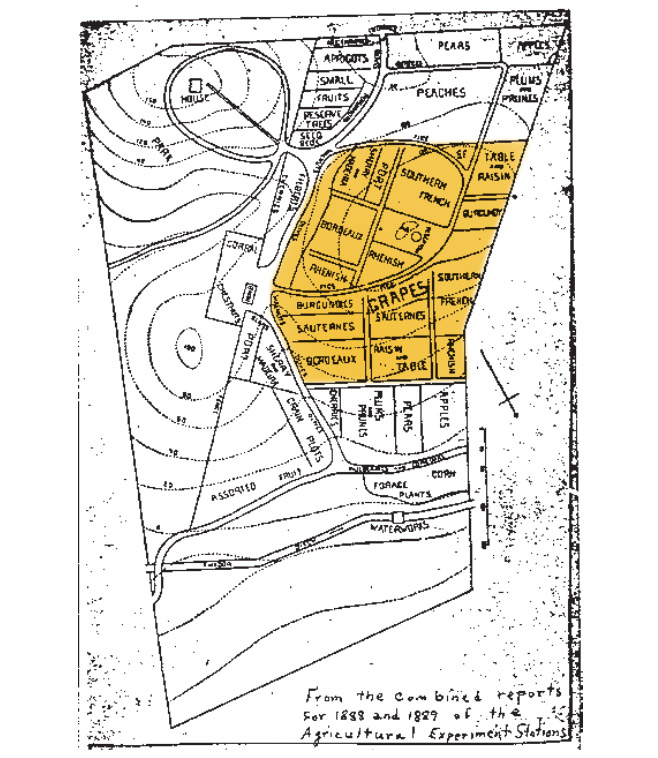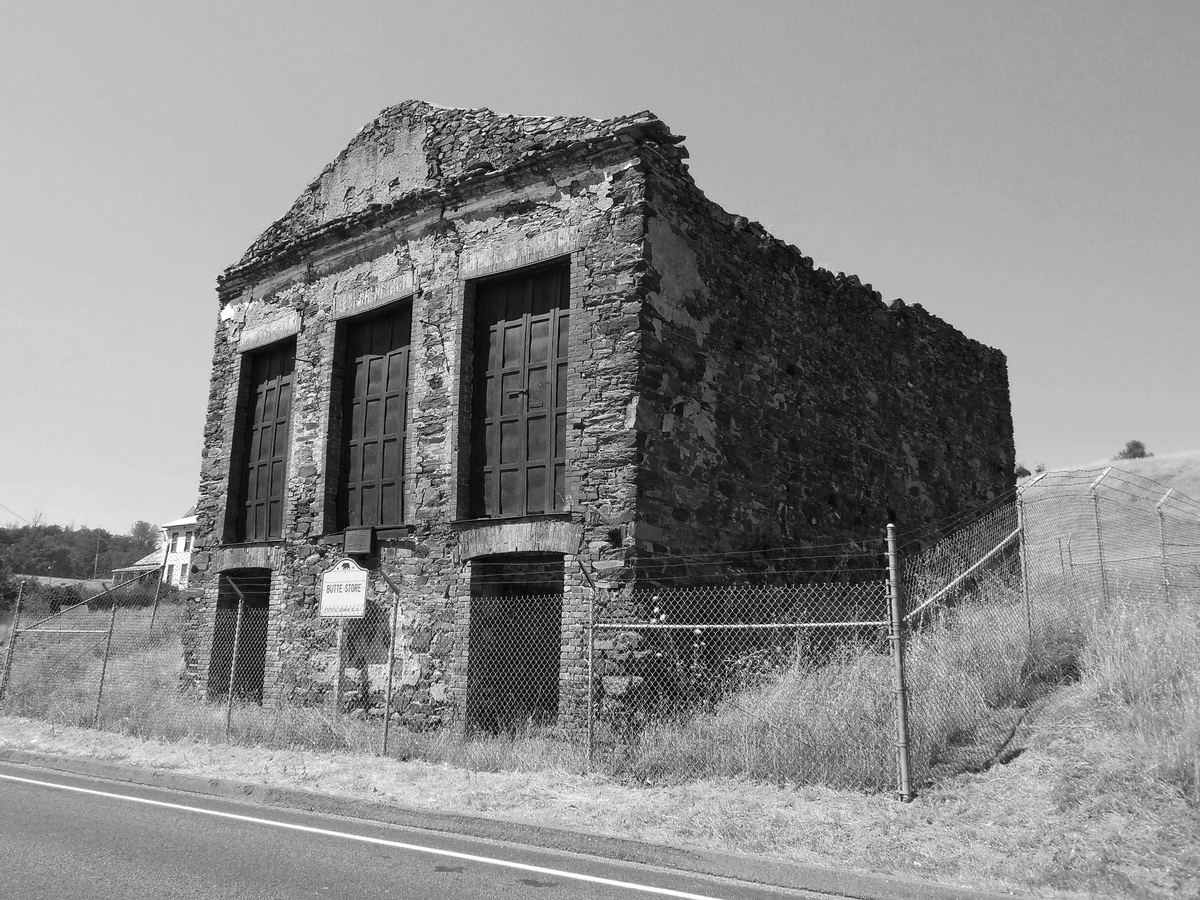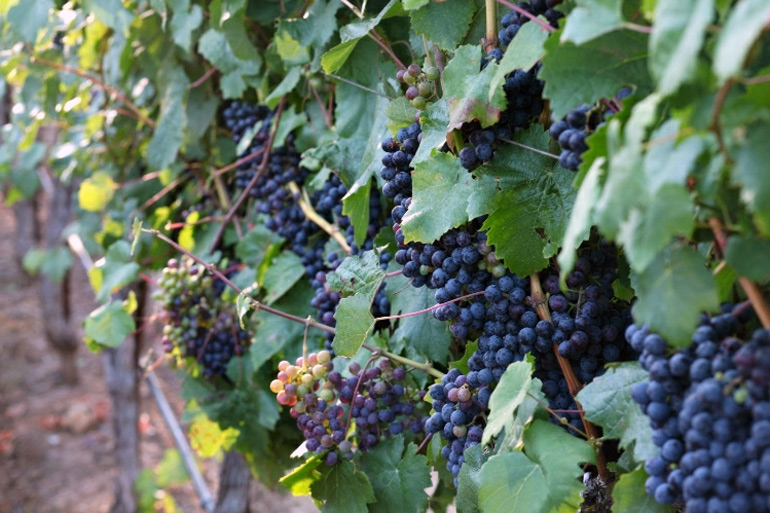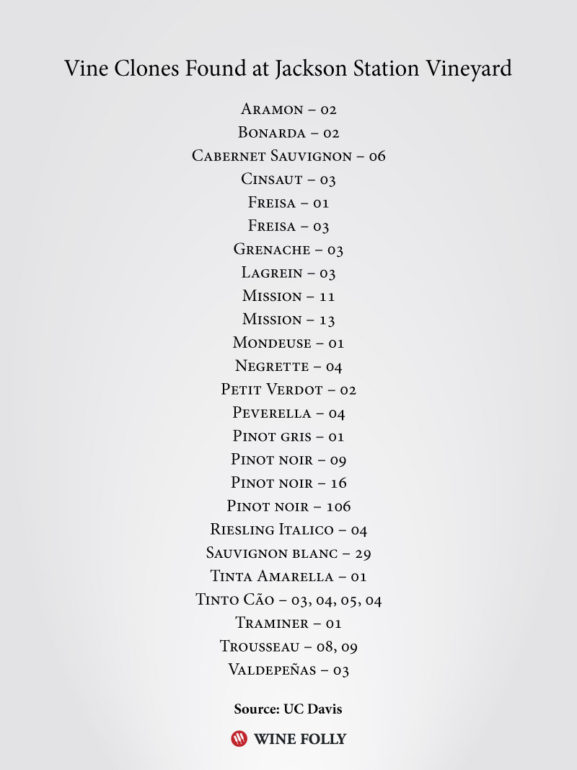If you really think about it, wine without history is just booze.
The two are so entwined that if you ask basic questions about wine (“Why wine is it aged in oak?” or “Where did Cabernet Sauvignon came from?”) you’ll inevitably get a small history lesson in the answer.
In the end, you’ll be smarter for it… and maybe even a bit tipsy.
“Wine is drinkable history.”

The Back Story
A while back we published an article about Petit Verdot.
Then, a bizarre email came in. A grape grower by the name of Fred Peterson on Bradford Mountain (Sonoma) had a mysterious story about the origin of his Petit Verdot grapes.
As the story unfolded we began to realize that many of Napa and Sonoma’s greatest wines could pay tribute to a lost experimental vineyard in the Sierra Nevada foothills.

Digging for gold grapes
Our story goes back to Dr. Austin Goheen. Goheen was a plant pathologist hired to fight grape viruses at the University of California Davis from 1956 to 1986.
His work involved meticulously cleaning and documenting hundreds of mother vines imported from Europe and from vineyards around California.
One way to fight plant diseases is to seek out disease-resistant vines. So, in order to find the best vines, Dr. Goheen went on a treasure hunt in search of quality cuttings from old vineyards.
In his searches, he heard of a mysterious abandoned vineyard in the woods of Amador County. It supposedly contained a great number of wine varieties all planted before 1900.
The surprise: it was created by none other than University of California!

“I even found numerous vines still growing in spite of the fact that deer had browsed them for almost 60 years.” –Dr. Austin Goheen.
Jackson Station Vineyard Story
The research station started in the 1880’s under the guidance of a Professor Hilgard, who was one of the first scientific viticulturists of California.
The Foothill Experiment Station at Jackson (a former gold mining town) was planted in 1889 with many different fruit trees and vines.
The goal was to help transition local miners into farming. Unfortunately, the costs ended up being too high and the Foothill Experiment Station was deserted in 1903.
A Turn For the Worse
The Jackson station buildings were neglected for several years until an Italian stone mason family called the Fantozzi’s moved in and claimed the title with squatter’s rights. Shortly thereafter, a legal battle ensued against the Fantozzis.
The University and the original landowners had an agreement that if the University stopped using the land it would revert back to the original owners, but neither party had anticipated adverse possession.
The original owners and the university fought to get back the land and lost. It was a classic case of Squatter’s rights!
Unfortunately, someone in the group must have gotten vindictive. The property was raided and all the buildings were burned!
After the fire, the Fantozzis held onto the property, but abandoned it.
“The vineyards remained untouched for 60 years.”

The old general store just outside of Jackson, CA. It was made by an Italian stone mason in 1857. by Jimmy Emerson
Time Heals Wounds
Dr. Goheen came across the story of the Foothill Experiment Station at Jackson and asked for permission to inspect the property.
Naturally, Fantozzi II was not enthusiastic about someone from the University of California looking into his land! He eventually gave way since Goheen’s objective were purely scientific.
With university records and the help of a passionate assistant (by the name of Carl Luhn), Goheen was able to identify 132 different cultivars! The small team was able to obtain cuttings and propagate them.

What happened to these cuttings?
At the time, the cuttings produced vines that appeared to have higher disease resistance than what was being used. The clones obtained at the Jackson station vineyard ended up in the hands of viticulturists around the state.
For example:
Cabernet Sauvignon Clone 6: One of the most important Jackson station vineyard clones which surfaced into importance in the 1980’s when Beaulieu Vineyards ran several clone trials of Cabernet and saw it as a clear winner. Clone 6 produces Cabernet grapes with thick, healthy skins which, in turn, produces red wines that are deep and dark in color and rich with intensity and minerality. Clone 6 can be found growing all over Napa in some of the area’s best vineyards.
Sauvignon Blanc Clone 29: In the late 1960’s, Robert Mondavi introduced a Sauvignon Blanc wine that was inspired by the oaked white wines of Pouilly Fumé. He called the wine Fumé Blanc. The Jackson station clone was used for Mondavi’s Fumé Blanc. In the map and records of Jackson station, the vines were simply referred to as “Sauternes” after the sweet wines of Bordeaux.
Petit Verdot Clones 2: A heritage clone originally planted in Professor Hilgard’s vineyards around Berkeley, CA after being imported from France in the 1870’s. The vines produce a large crop and wines with very deep color. This is likely the same plant material that was used to plant Fred Peterson’s in 1983 and subsequently the Petit Verdot at Ridge Vineyards as well (since Fred was the vineyard manager there from 1985–1990).
Last word: drink more history
Next time you drink a bottle of wine, dig into its history. You might be surprised what you find.
Sources
Special thanks to Fred Peterson for reaching out
Dr. Austin Goheen’s direct account of the story in the UC Davis Archives
The origin of the Grape Program at Foundation Plant Materials Service (FPS) at UC Davis UC Davis Archives
A neat article from 2000 in LA Times about Clone 6 Cabernet Sauvignon that you’ll probably find interesting. LA Times
Got an amazing story? Connect with me about it! Find me in the the About Us section of this site 🙂

